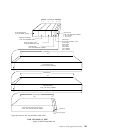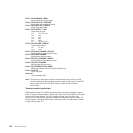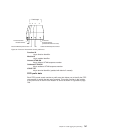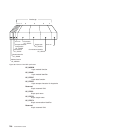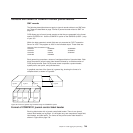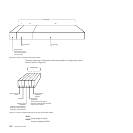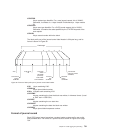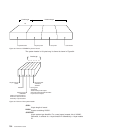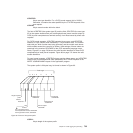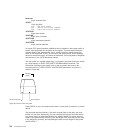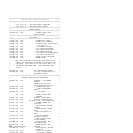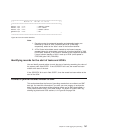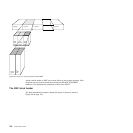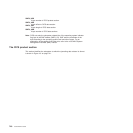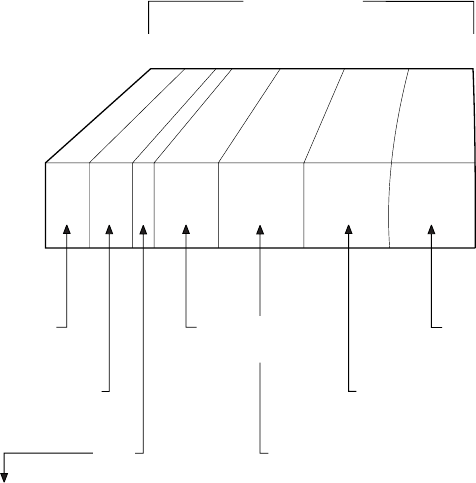
JCRUTRID
2-byte user-type identifier. For a CICS journal request, this is X'0000'.
Otherwise, it contains the code specified by the JTYPEID keyword of the
user request.
JCRLRN
2-byte record number within the block.
The field JCRSTRID (the system-type ID) and the field JCRUTRID (the user-type
ID) in the system header allow you to distinguish those journal records output by
CICS (by such components as terminal control), from those issued by direct user
requests.
For CICS journal requests, JCRUTRID contains binary zeros, and JCRSTRID
contains a 1-byte function code followed by a 1-byte module code. The function
code tells you which function was being journaled, and the module code shows
which module caused the record to be written. Valid settings of these codes are
contained in the member DFHFMIDS of the CICS assembler-language macro
library. Figure 97 on page 736 shows the valid function identifiers of those CICS
components that issue journal requests. Figure 98 on page 737 shows the valid
module identifiers.
For user journal requests, JCRSTRID always contains binary zeros, and JCRUTRID
contains the 2-byte hexadecimal code specified by the JTYPEID keyword of the
WRITE JOURNALNAME request in the application program.
The system prefix is 20 bytes long. Its format is shown in Figure 95.
JCSPLL
2-byte length of the system prefix.
Tasknumber
JCSPTASK
13 4 4 4
TerminalID
JCSPTERM
TransactionID
JCSPTRAN
Timeofrequest
JCSPTIME
Lengthofsystem
prefix
JCSPLL
22
Reserved
Flag
JCSPF1
Fixedlength
X'01'Userprefixpresent
X'02'Physicalstart-of-task,JCSPSOTK
X'04'Logicalstart-of-task,JCSPLSTK
Figure 95. Format of the system prefix
Chapter 27. CICS logging and journaling 733



